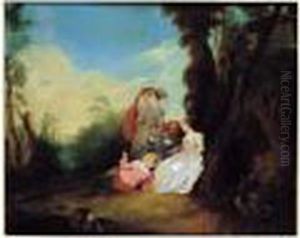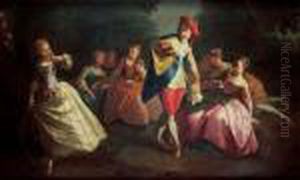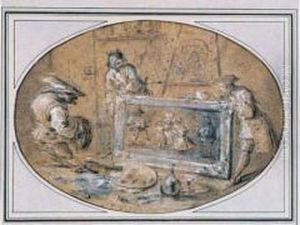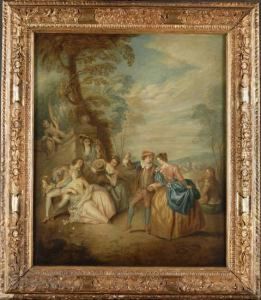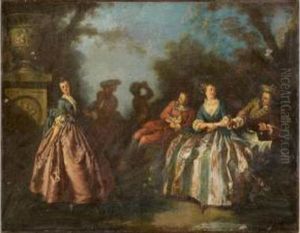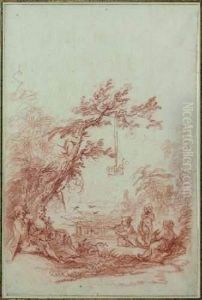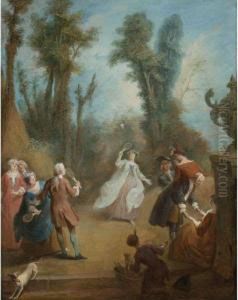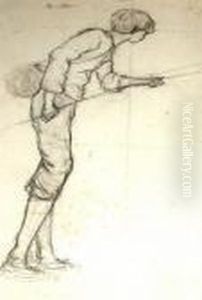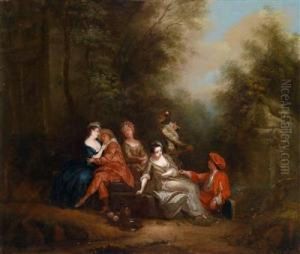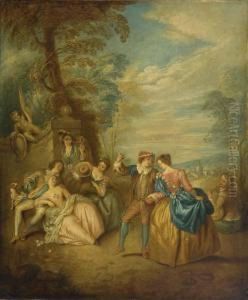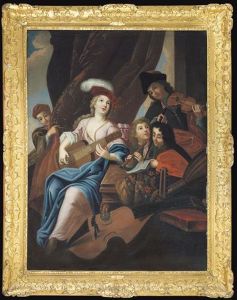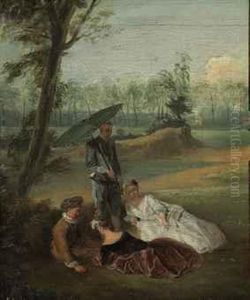Pierre Antoine Quillard Paintings
Pierre Antoine Quillard was a French painter and engraver born in 1701. His artistic career was relatively short-lived, as he died at the early age of 32 in 1733. Not much is known about the details of his life, and he is often considered a minor figure in the history of French art. Despite the brevity of his career, Quillard managed to create works that reflect the Rococo style, which was popular during his time. This style was known for its ornate and decorative qualities, with a focus on light-hearted themes, asymmetry, and curvilinear forms.
Quillard's works were characterized by their delicate execution and often included pastoral scenes, portraits, and religious subjects. He was influenced by the works of the more prominent Rococo artists of his time, such as Antoine Watteau and François Boucher. Quillard's paintings and engravings reveal a sensitivity to the Rococo aesthetic, with a gentle use of color and a light touch in his compositions.
Due to the limited information about Quillard's life and the scarcity of his works, his contribution to the art world has not been extensively documented or studied. His works are occasionally displayed in art galleries that showcase 18th-century French art, but they do not command the same attention as those of his more famous contemporaries.
In summary, Pierre Antoine Quillard was a French artist whose life and work were marked by the Rococo style of the 18th century. Despite his early death and the limited availability of his work, he remains a figure of interest for those studying the lesser-known artists of the Rococo period.
